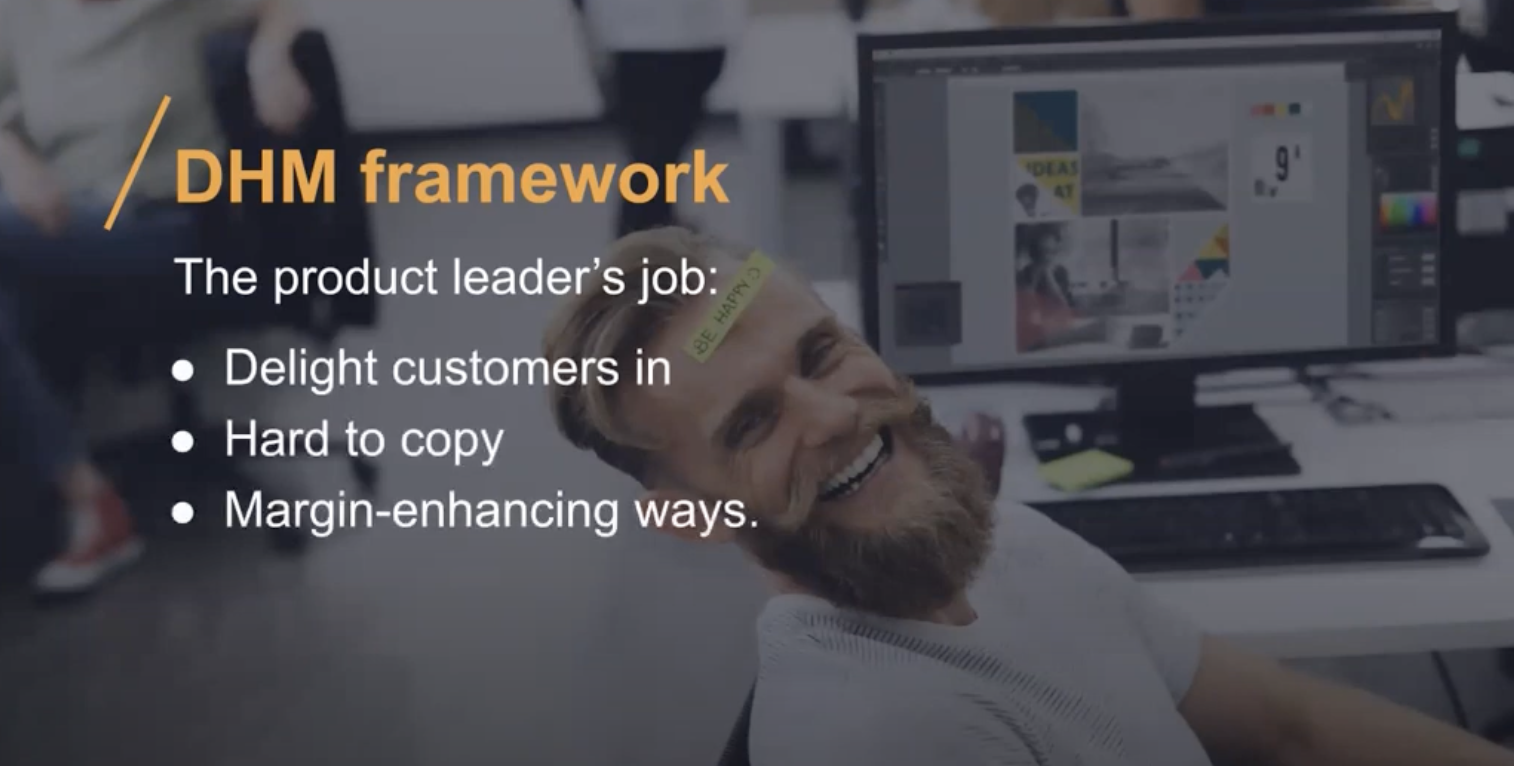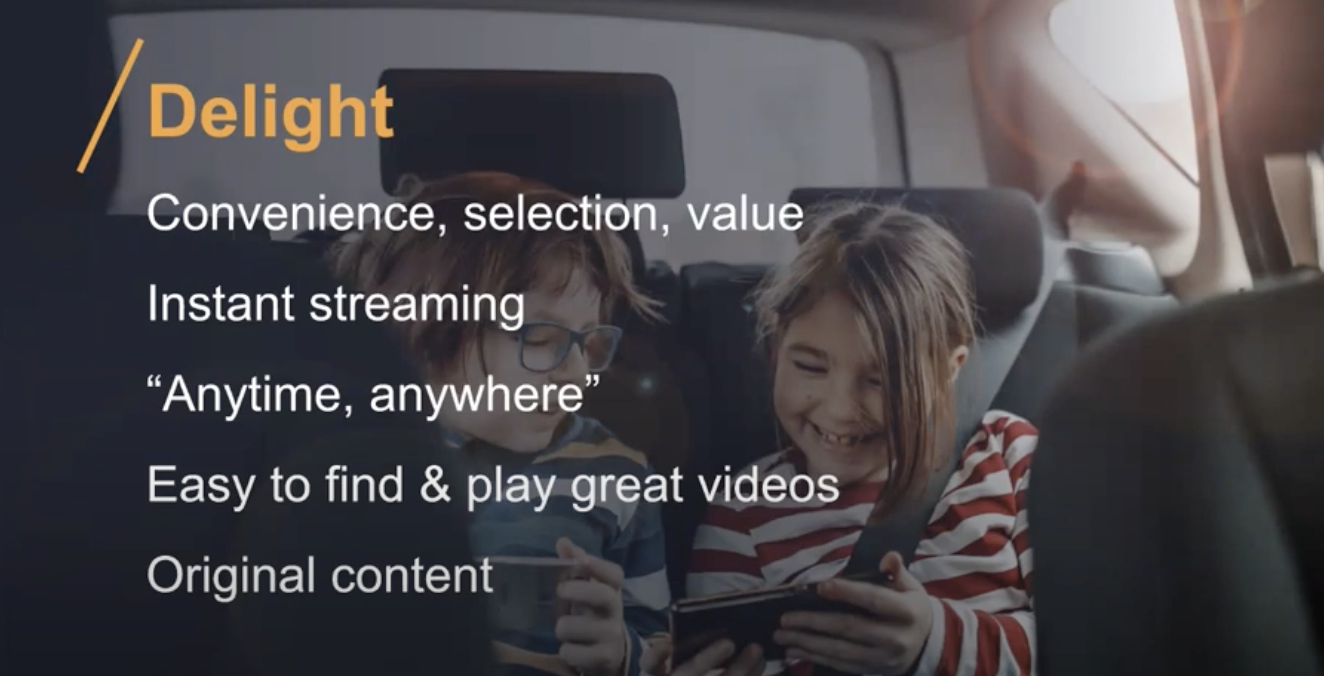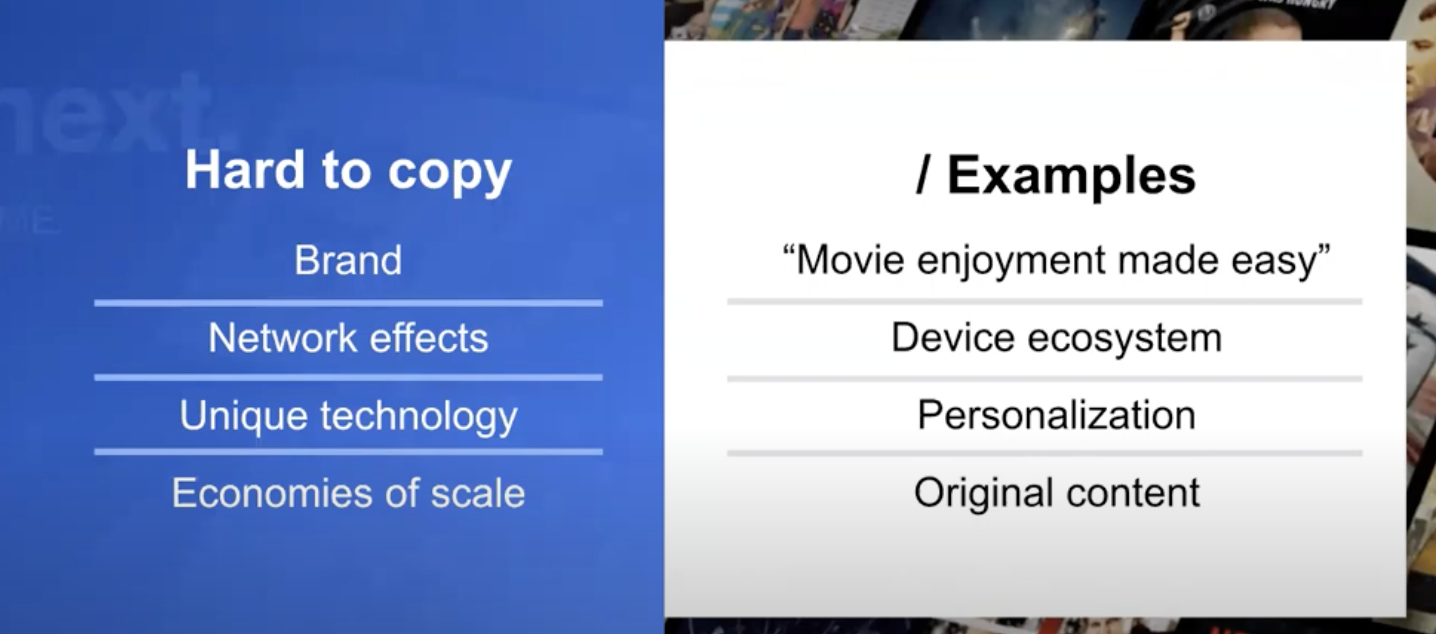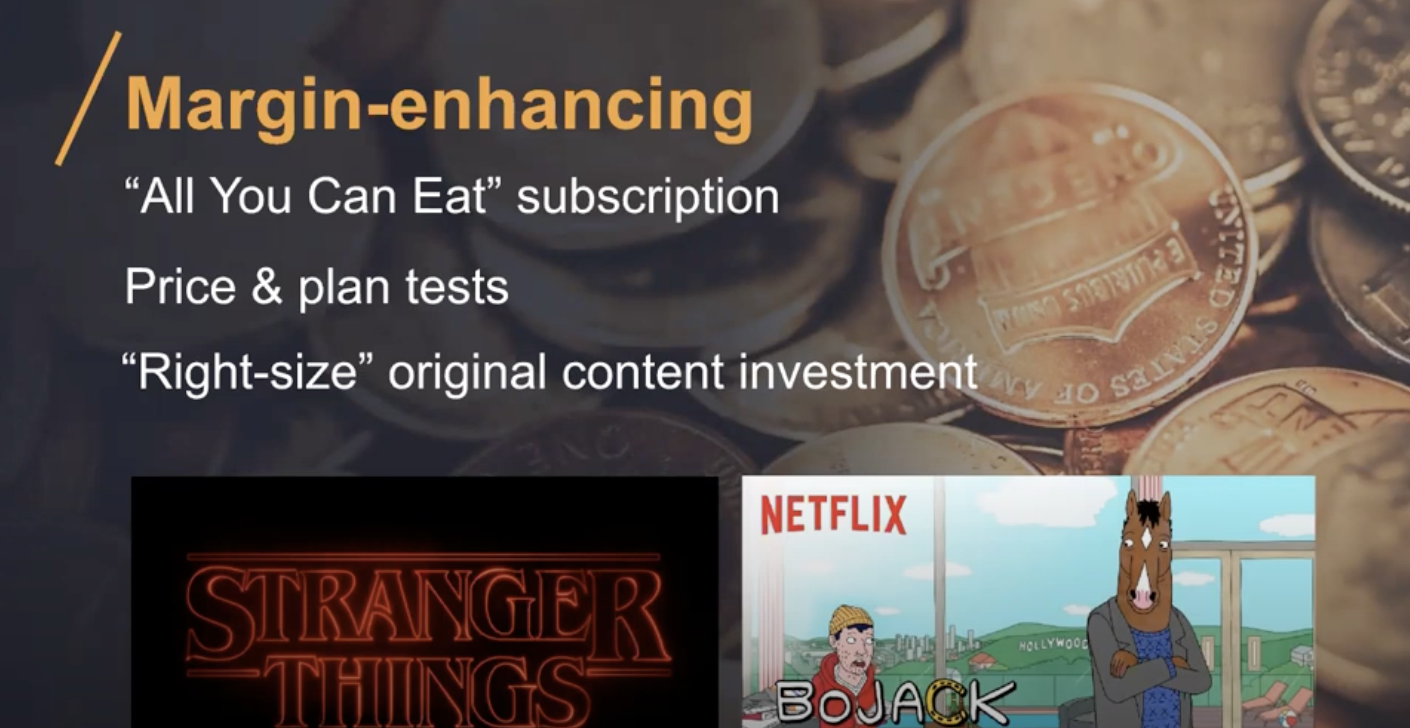I had the pleasure of attending several in-person and virtual talks by Gibson Biddle, former VP/CPO at Netflix/Chegg. He is now a prolific speaker, so much that you will frequently see his name listed in popular product communities and company events. And if you missed one of this live speaking engagements, there are many YouTube recordings of previous talks.
One thing that got stuck on me was his DHM framework. It is the core to his product thinking and I have seen him kick off many talks with it. The DHM framework is Gib’s approach to product strategy.

I took some notes and screenshots from one of his talks where he reviewed the above. He uses examples from his time when he was the VP of Product at Netflix.
Delight
Delight is straightforward. Customer delight is surprising a customer by exceeding their expectations and thus creating a positive emotion response (Source: Wikipedia).

Re: “Anytime, anywhere” – Gib shared a story on how creating the Netflix APIs started off as an experiment to enable Netflix on Xbox. Then eventually more clients were built for more devices thereby creating more value for customers as they can play off of any device. This became a key delighter for customers and a key differentiator for Netflix.
Hard to copy
Hard to copy is differentiation. Digital companies must differentiate to remain competitive. Differentiation allows the company to control a price premium over its product, as long as it results in an outcome that the customers care about.

Re: “Economics of scale” – Gib spoke of the huge advantage that Netflix has in its 175M+ subscriber base and investing $20B/year on original content. Amazon, Hulu, and Apple, are only able to afford $5B, $3B, and $2B, respectfully. This investment in original content (including experimental content) is Netflix’s strategy to defend against the increasingly crowded video streaming market.
Margin-enhancing ways
Margin-enhancing is how you build a business. We need to understand whether the feature is right for both the customer and the business. A business has to choose between cost leadership or differentiation to increase its profit margins.

Re: “Right-size” – Gib shared a story of how Netflix used data to its advantage. User viewership data can provide direction on how much budget should be allocated to an in-house production like Stranger Things or Bojack Horseman. This mitigates the risk of Netflix overspending on assets that do not get enough viewership.
Summary
Gibson Biddle’s approach to product strategy is to answer the question, “How will your product delight customers, in hard to copy, margin-enhancing ways?” I encourage everybody to think about this question as we march forward with 2022 annual planning.
(Gibson also wrote a 12-essay series on How to Define Your Product Strategy. It is a pretty good read and may influence our thinking for 2022 annual planning. I might highlight parts of these in a later blog post)